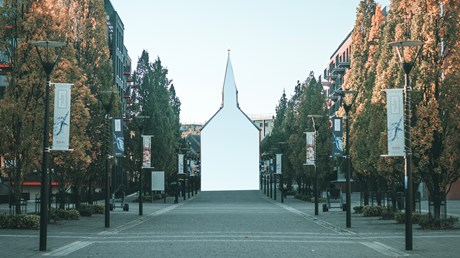With a record number of congregations predicted to close their doors by 2025, multiuse developments may be the future for shrinking congregations and empty buildings.

The future looked bleak for St. Peter’s United Church of Christ (UCC) in Louisville, Kentucky. The congregation had dwindled to a dozen elderly German Americans in a poor, predominantly Black neighborhood. Their building was falling apart.
Despite its façade of stained glass and majestic steeples, all the building systems were failing, including plumbing, electrical, and heating. Plaster was falling off the walls and ceiling. The city eventually closed the building due to its dangerous lead paint.
But thanks to the vision of pastor Jamesetta Ferguson and a partnership with the UCC’s Church Building and Loan Fund, the church’s property now houses a thriving multiuse development known as The Village at West Jefferson. It has injected life into the local economy—and the formerly dying church.
With funding from multiple mainline denominations, private investors, the city of Louisville, and the federal government, St. Peter’s erected a complex that includes a coffee shop, a credit union, a daycare center, health care services, and more. Hundreds use it weekly. Plus, the congregation is up to 160, with a “multi-cultural, multi-generation” membership.
“The community has really been renewed in many ways,” said Patrick Duggan, executive director of the Church Building and Loan Fund. St. Peter’s “is doing the work of serving the poor. In the meantime, it has created about 100 jobs. This is not just talking the talk. It’s actually walking the walk.”
Similar multiuse developments are popping up across North America on the properties of formerly dying churches—most of them in mainline Protestant denominations.
A Montreal Anglican church shares space ...
from Christianity Today Magazine
Umn ministry




.gif)

.gif)
.gif)
